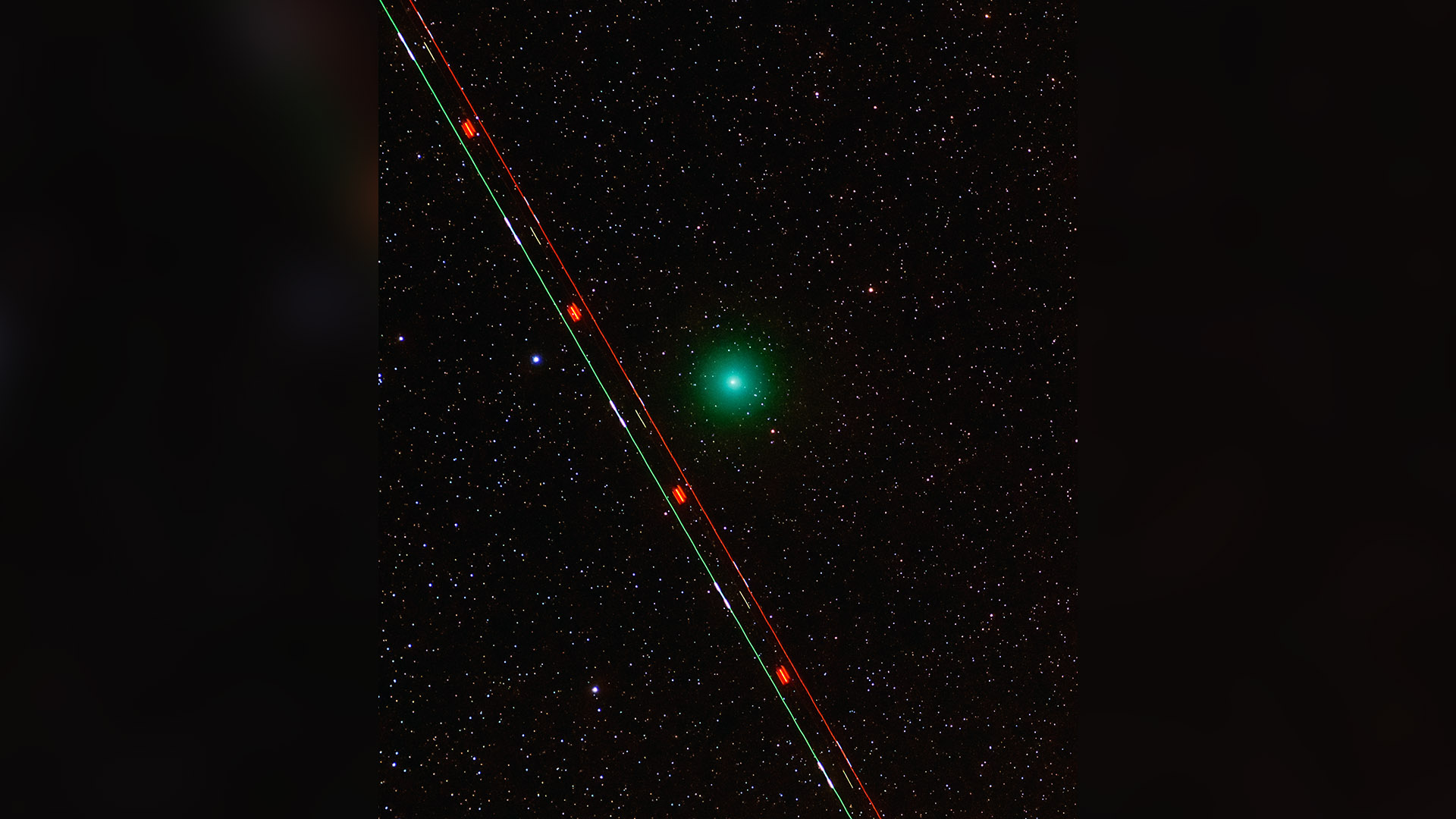Brand-new meteor shower from 'Christmas comet' may appear over Earth for 1st time this week

A brand-new meteor shower may light up Earth's skies on Dec. 12, arriving just before the peak of the colorful Geminid meteor shower, a new study suggests.
Meteor showers occur when meteoroids, or rocky particles from outer space, burn and glow upon entering Earth's atmosphere. Most meteor showers come from debris streams of comets or asteroids crossing Earth's orbit. In this regard, the new shower isn't unique; it arises from the comet 46P/Wirtanen, a "Jupiter family" comet (meaning it orbits between the sun and Jupiter). But unlike other meteor-generating fragment streams, which stem from comets or asteroids that get overheated after coming too close to the sun, the debris stream intersecting Earth this week was created during an extra-close encounter with Jupiter 50-odd years ago.
More striking is that the new "shooting stars" may be the first ever to originate from 46P/Wirtanen. The comet itself has flown fairly close in the past; on Dec. 16, 2018, it came within roughly 7 million miles (11 million kilometers) of Earth and was dubbed the "Christmas Comet" for its festive green hue.
But a team of researchers from France and the U.S. realized that 46P/Wirtanen's debris, created by several encounters over the years with Jupiter’s gravitational pull, didn't seem to have historically produced shooting stars.
To check this, the researchers simulated the paths of the comet's debris trails in a study accepted for publication in the journal Astronomy & Astrophysics. The team made sure to check "whether or not the meteoroids pass close to the Earth," lead study author Jérémie Vaubaillon, a researcher at the Institute of Celestial Mechanics and Ephemeris Calculation in Paris, told Live Science in an email.
The analysis showed that 46P/Wirtanen's meteoroids crossed Earth's path in 2007 and 2018. Each time, though, the amount of debris encountered was too little for even dedicated radar networks to observe. But this year looks more promising, with Earth intercepting a denser region of the comet cloud.
Yet most skywatchers shouldn't get too excited. For one, the researchers estimate a peak of just two to 10 meteors per hour. (The Geminids, which peak around the same time in the Northern Hemisphere, should display up to 120 meteors per hour, for comparison). Besides, the meteors are predicted to be traveling relatively sluggishly, at about 6 miles per second (10 kilometers per second). The meteors are also expected to be relatively small, Vaubaillon said. Both factors will probably result in only faint flashes of light.
Get the world’s most fascinating discoveries delivered straight to your inbox.
The biggest damper, though, is that the meteor shower will be visible only from Oceania and Indonesia, the team found. Still, those lucky enough to be in the right spot may witness a fascinating and rare event. Not only are new meteor showers fairly infrequent, but no major 46P/Wirtanen-associated shower is expected in the coming decade, which is one reason this event is unique, Vaubaillon said.
Although visible throughout the sky, the shooting stars will appear to originate from the constellation Sculptor in the southern sky. The researchers also predict the shower will arrive between 0800 and 1230 GMT (6:30 p.m. and 11 p.m. Australian Central Standard Time).
If you happen to be in the viewing zone, there are some steps you can take to improve your chances of spotting meteors. Find a spot away from lit areas after sunset, and use a pair of good stargazing binoculars or, preferably, a small telescope. With the moon having set before sunset, the sky will be as dark as it can get, but cloudless conditions are also necessary. And although the new shooting stars coincide with the Geminids, the two are easily distinguishable — apart from their larger numbers, the latter are brighter and seem to come from the constellation Gemini.

Abha Jain is a freelance science writer. She did a masters degree in biology, specializing in neuroscience, from the Indian Institute of Science, Bengaluru, India, and is almost through with a bachelor's degree in archaeology from the University of Leicester, UK. She's also a self-taught space enthusiast, and so loves writing about topics in astronomy, archaeology and neuroscience.



